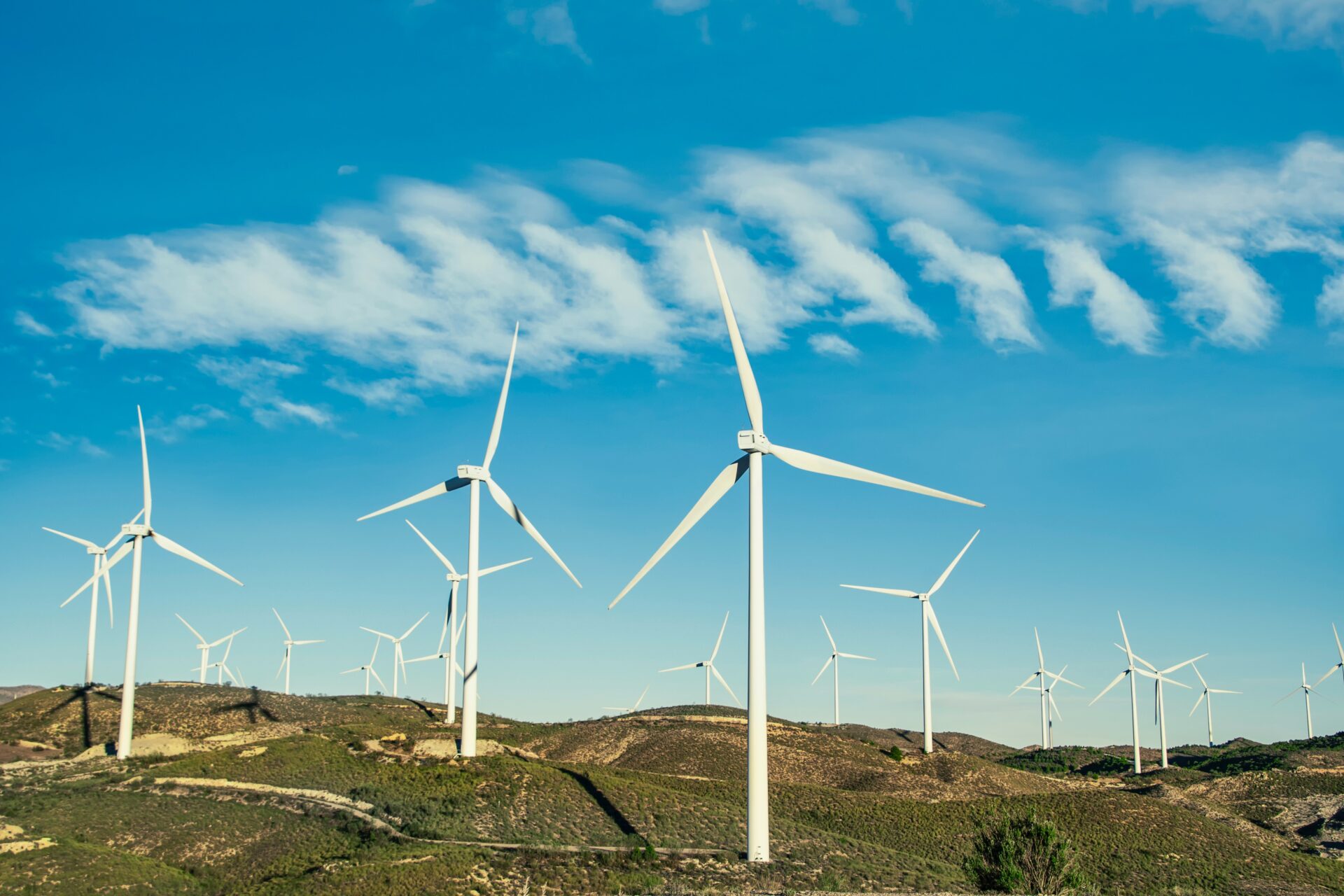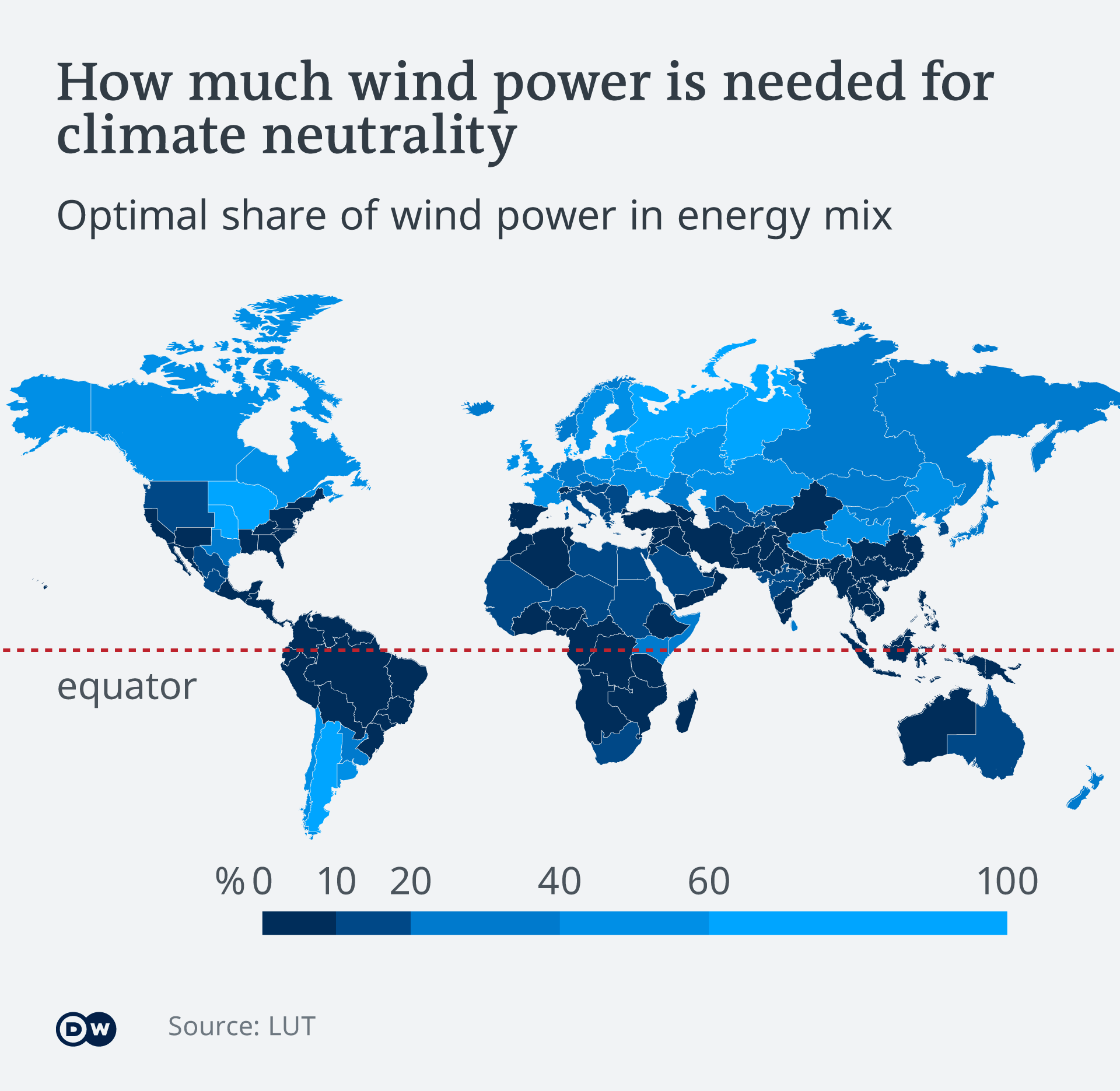
- Wind Power is one of the oldest energy sources harnessed by humans.
- Experts say wind and solar energy could cover more than 95% of total global energy demand in the future.
- Wind energy has grown rapidly, but its long-term contribution to energy supply depends, in part, on future costs and value.
Wind Power is one of the oldest energy sources harnessed by humans. Early windmills used wind to crush grain or pump water. Now, modern wind turbines use wind to generate over 12% of the world’s electricity, with just over 743GW of wind power capacity worldwide. This helps the world to avoid over 1.1 billion tonnes of CO2 annually – equivalent to the annual carbon emissions of South America.
Technology and commercial advancements are expected to continue to drive down the cost of wind energy, according to a survey led by Lawrence Berkeley National Laboratory (Berkeley Lab) of the world’s foremost wind power experts. Experts anticipate cost reductions of 17%-35% by 2035 and 37%-49% by 2050, driven by bigger and more efficient turbines, lower capital and operating costs, and other advancements. The findings are described in an article in the journal Nature Energy.
Read More :
The study summarizes a global survey of 140 wind experts on three wind applications – onshore (land-based) wind, fixed-bottom offshore wind, and floating offshore wind. The anticipated future costs for all three types of wind energy are half what experts predicted in a similar Berkeley Lab study in 2015. The study also uncovered insights on the possible magnitude of and drivers for cost reductions, anticipated technology trends, and grid-system value-enhancement measures.
Wind power for climate neutrality

Experts say wind and solar energy could cover more than 95% of total global energy demand in the future. But this depends on each region. This could include hydropower, batteries, electrolyzers for making hydrogen and synthetic fuels, and other storage and conversion technologies, said Christian Breyer, professor of solar economics at LUT University in Finland.
A study published in the journal Energy found that it would be cheaper to generate around 76% of global energy demand with solar power and 20% with wind power. However, in areas with little sunlight, the share of wind power will be much higher: more than 90% in northern Russia, 81% in the midwestern United States (US), about 72% in northern China, and about 50% in developing countries. -countries in central and northern Europe such as Poland, Netherlands, United Kingdom, and France. In Germany, splitting wind energy to cover all energy demand will be 31%.
Read More :
In those areas, where the sun shines less brightly, wind is often a cheaper alternative. “In Europe, wind power is a major pillar of energy supply,” said Breyer. “If we don’t have very good sunny days in Europe, we usually have very good sunny days, so well done together.”
Wind energy has grown rapidly, but its long-term contribution to energy supply depends, in part, on future costs and value. The new study finds that cost reductions have accelerated in recent years: faster than previously predicted by most forecasters, and faster than historical rates of decline. The experts surveyed anticipate future reductions and growing use of value-enhancement measures, both for onshore wind and offshore wind.
References :
[1] Experts’ Predictions for Future Wind Energy Costs Drop Significantly
[2] Seberapa Besar Potensi Energi Angin di Masa Depan?
[3] 9 Reasons Wind Power is Still the Future of Green Energy




